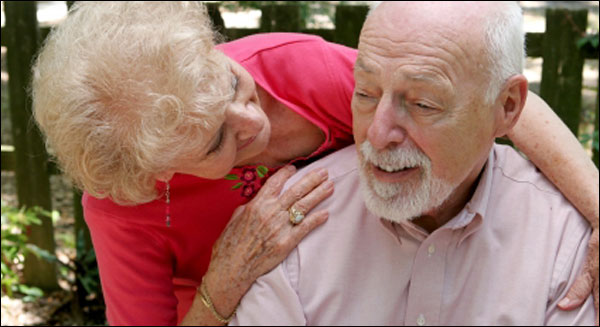
Dementia is not just one specific disease. It’s one term that describes a number of disorders that affect the functioning of the brain. People who suffer from dementia show improper intellectual functioning which leads to poor response in relationships and usual daily activities.
Types
Dementia can be classified in to many types. This classification tends to make a fair attempt to categorize all the types that have a few features common with respect to each other, for example which part of brain is affected or if they are progressive in nature or not. There are five types of dementia:
1. Cortical dementia
Brain damage affects the outer layer of the brain, this is called brain cortex. This kind of dementia cause many problems in the brain like in thinking, language, memory and social behavior of an individual.
2. Sub-cortical dementia
The parts below the cortex are affected here. Problems related to movement, memory and emotions are caused in sub-cortical dementia.
3. Progressive dementia
As the time proceeds, dementia turns worse as it interferes with cognitive abilities.
4. Primary dementia
Dementia that are not caused from any other disease, for example Alzheimer’s disease.
5. Secondary dementia
It’s a result of prolonged physical injury or disease.
In fact there are many dementia that can be placed in more than one of these categories like Alzheimer’s disease is both cortical and progressive dementia.
Causes
There are many disorders causing dementia and they are described below:
1. Alzheimer’s disease
This is the most common cause of dementia and people aged over 65 are the common victims. It has been found that the symptoms of dementia are reflected after the age of 60 years. However, due to specific gene set, the symptoms appear at the age of 30 even. A person with Alzheimer’s suffers in the way that his thinking abilities decline in the next 7-10 years. All the functions of the brain including language, judgment, behavior, memory are thoroughly affected.
The two brain abnormalities affect the brain in this disease; neurofibrillary tangles that contain tau, a protein gets changed in a way that it’s twisted and the other abnormality is in the amyloid plaques which show unusual clumping of a protein called beta amyloid. When the disease is in the starting phase, the patient experiences changes in his personality and memory. But later on, the language and memory issues turn worse.
2. Vascular dementia
The second common cause of dementia is vascular dementia. It is caused by brain damage from cerebrovascular to cardiovascular issues. The disease is also an outcome of endocarditis and genetic diseases. Sometimes it might combine with the Alzheimer’s disease. In vascular disease the person manages his personality till the acute stage of the disease. In fact, people with this disease wander at night and suffer from depression.
On the basis of symptoms and causes, vascular dementia is of various kinds. Multi-infarct dementia (MID) is a result of strokes that hit the brain. Infarcts are the multi damaged areas of the brain. Excessive lesions are caused in the nerve fibers and the white matter. In single-infarct dementia, a single stroke damages the brain. These strokes generally hit the left hemisphere of the brain.
3. Lewy body dementia (LBD)
This belongs to the category of progressive dementia which is very common. LBD occurs sporadically in people who do not have any such history in the family. The cells in the brain cortex and substantia nigra (mid-part of the brain) die because of the structure called Lewy bodies. Symptoms are somewhat similar to that of Alzheimer’s disease. In addition there are some other symptoms as well and these include Parkinson’s disease symptoms and visual hallucinations. Till yet no cure to the disease has been found and the patient is expected to live till the next seven years after the symptoms appear.
4. Frontotemporal dementia
It is also known as front lobe dementia and degenerate nerve cells. Tau protein accumulates into the neurofibrillary tangles which causes disruption in the cell functioning and the cells gradually die but there is no change in the amyloid plaques. Genetic factors are responsible for it. Symptoms include increase in appetite, speech problems, inappropriate social behavior and finally memory loss in extreme cases.
5. HIV-associated dementia (HAD)
Human immunodeficiency virus (HIV) is the one responsible for AIDS and HAD results from the same virus. The white matter is destroyed due to the disease thereby leading to the problems like difficulty in concentrating, social behavior changes and poor memory. In addition people also deal with problems in the movement. The cure hasn’t been found as of yet but AIDS drugs set a hold on the symptoms.
6. Huntington’s disease
The disease is hereditary based and is caused by a faulty gene named huntingtin. Many regions of the spinal cord and brain are degenerated. Symptoms appear as early as in the age of 30’s or 40’s which include irritability, depression and anxiety. The person might also show severe psychotic behavior.
7. Dementia pugilistica
It is also known as the Boxer’s syndrome caused to the people who receive head trauma due to a punch on the head. Slurred speech and poor coordination are the symptoms. Posttraumatic dementia (PTD) is the result of a single traumatic brain in which the patient suffers from long-term memory loss.
8. Corticobasal degeneration
It’s the progressive dementia and results in atrophy and nerve cell loss in the brain. Symptoms appear at the age of 60 which hit one side of the body and later it affects both the sides. Memory loss, bad coordination are the common symptoms.
Symptoms
The symptoms are many and vary from type to type of the disorders. People with dementia lose their capability to solve different problems. They show impaired memory, suffer from depression, get agitated easily, experience hallucination and also show impairment in their speech. However, the most common problem is the memory loss.
Diagnosis
Accurate diagnosis is extremely important so as to start the treatment. Drug treatment surely helps the patients. A doctor record the patient’s history, performs physical examinations, carries out cognitive tests, take CT scans. Blood and urinal tests are also performed to detect dementia.
Treatment
For most of the dementia, there’s no such treatment to curb the disease but some medications are available. Drugs are used in case of Alzheimer’s disease and other progressive dementia. These drugs just slow down the disease progression thereby improving the life of the patients. Some tasks like note taking and memory aids are devised in the early stages. Behavior modification is used to control intolerable behavior.



